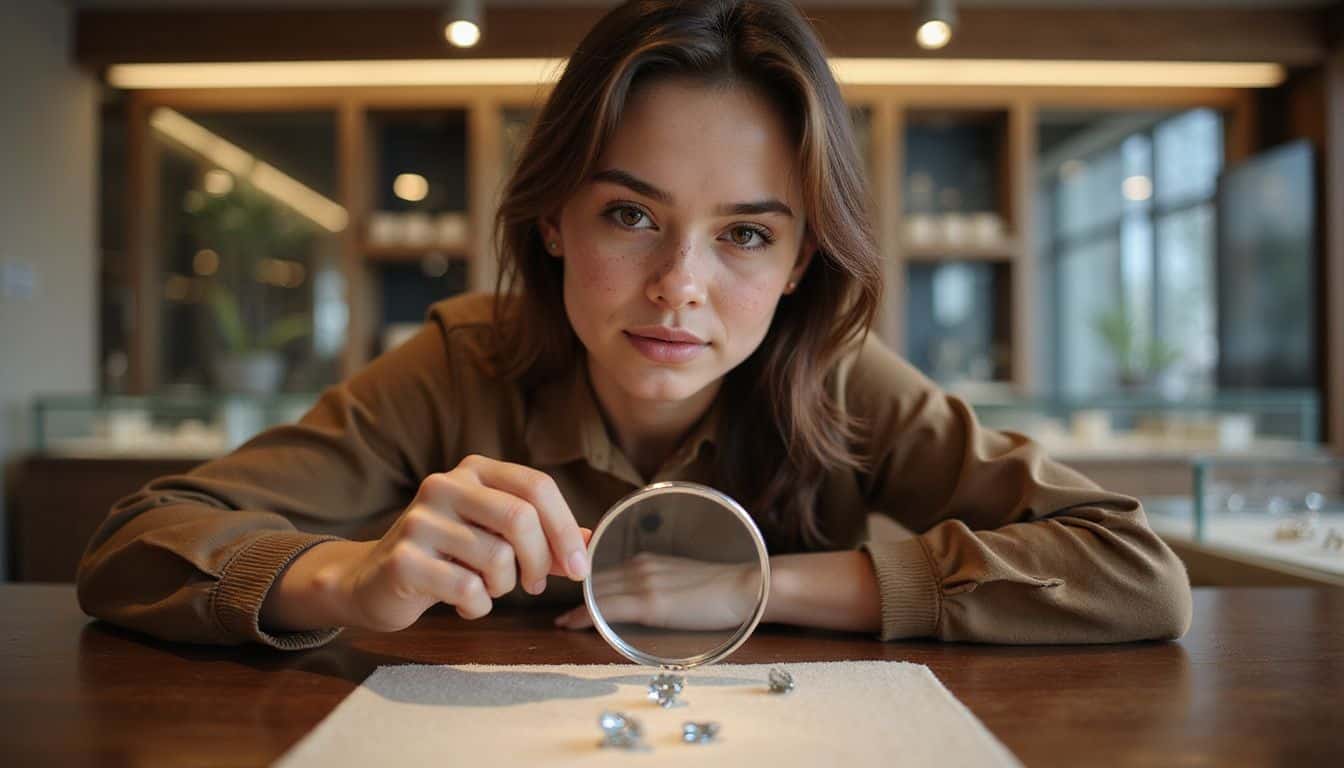Are you shopping for an engagement ring and wondering, can you tell the difference between lab grown diamonds and mined diamonds? Lab-grown diamonds are chemically identical to natural diamonds, with equal hardness rated at 10 on the Mohs scale.
This post breaks down common diamond myths to help you easily spot key differences and similarities when choosing stones. Read on to become a smart diamond shopper today!
Key Takeaways
Lab-created diamonds match natural diamonds chemically and share the same hardness—10 on the Mohs scale.
Scientists grow lab diamonds using two main methods, High Pressure High Temperature (HPHT) and Chemical Vapor Deposition (CVD), making real diamonds in weeks rather than billions of years.
You can’t spot differences between lab-grown and mined diamonds just by looking—experts rely on special equipment, like UV lamps, to detect minor variations.
Lab diamonds cost around 20 to 40 percent less than mined ones, and are easier on the environment—producing around 85 percent less carbon emissions.
Most lab-grown diamonds have tiny labels etched into their girdle—words like “lab-grown” or “laboratory-created”—visible with a magnifying glass.
Table of Contents
What Are Lab-Grown Diamonds?
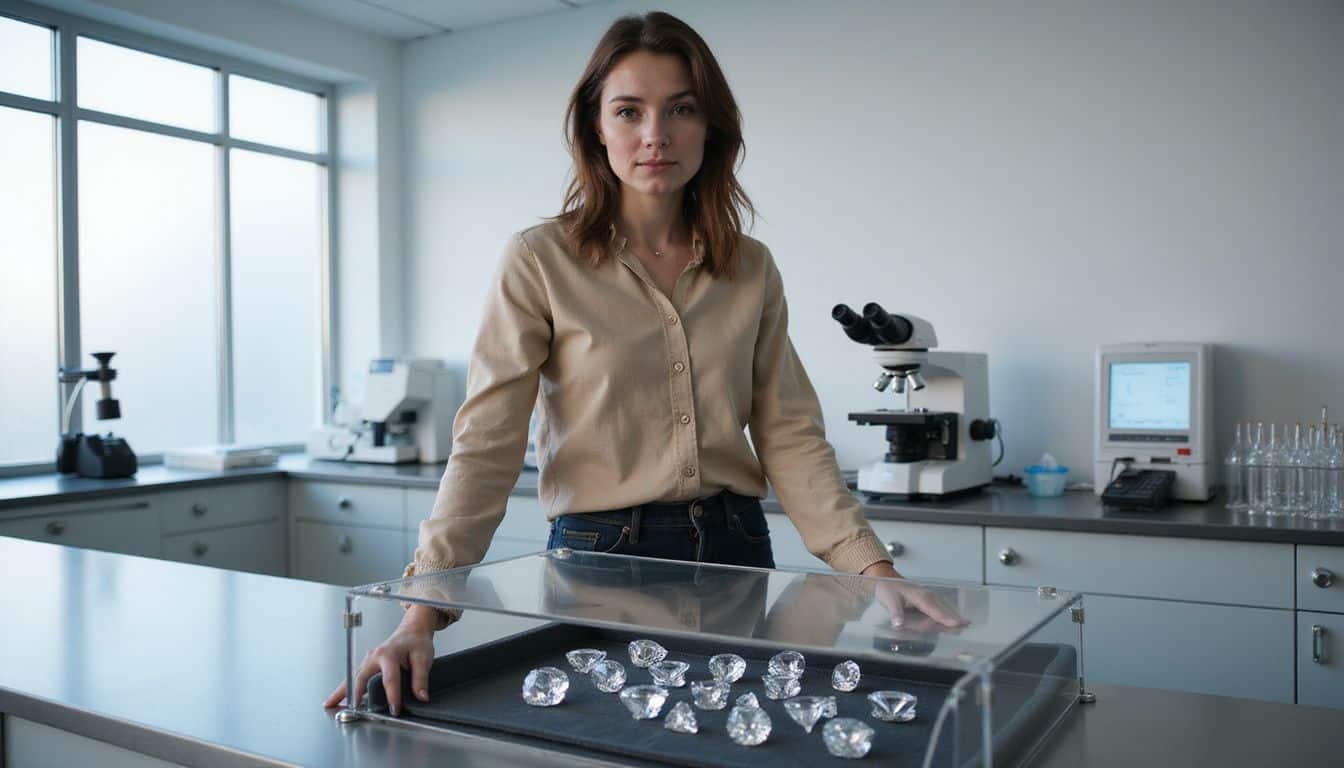
Lab-grown diamonds sparkle with the same fire and brilliance as natural diamonds but come from high-tech labs instead of mines. These gems form when carbon atoms bond under extreme heat and pressure, creating real diamonds that match their natural cousins in every way except origin.
How Lab-Grown Diamonds Are Made
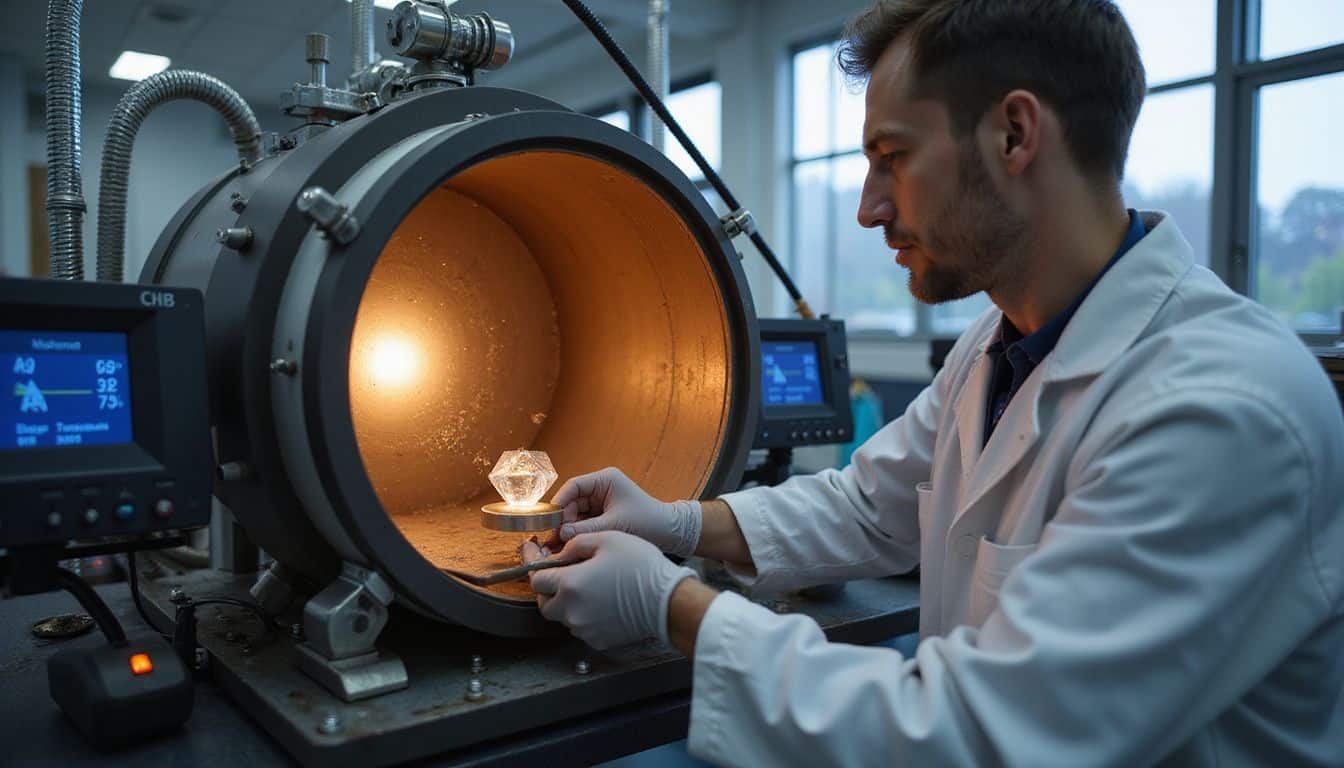
Scientists produce lab grown diamond gems in two main ways. One method—known as High Pressure High Temperature (HPHT)—copies nature’s diamond formation process.
It exposes pure carbon to heat above 2,000°C and pressure around 1.5 million PSI. Under these intense conditions, carbon atoms bond into diamond crystals at a speed of roughly 1 millimeter per day.
This method depends on specialized equipment strong enough to sustain such extreme heat and pressure throughout diamond production.
Another popular method is the Chemical Vapor Deposition (CVD) process. This method begins by placing a tiny diamond seed inside a sealed vacuum chamber. The chamber fills with carbon-rich gas, usually methane, and heats up to about 800°C.
At this high temperature, methane molecules break apart, freeing carbon atoms. These single atoms settle on the diamond seed, gradually creating layer after layer of diamond crystal.
By using either HPHT or CVD, experts can produce genuine diamonds with identical sp3 bonding and chemical structure as natural ones—in just weeks instead of billions of years.
Types of Lab-Grown Diamonds (CVD and HPHT)
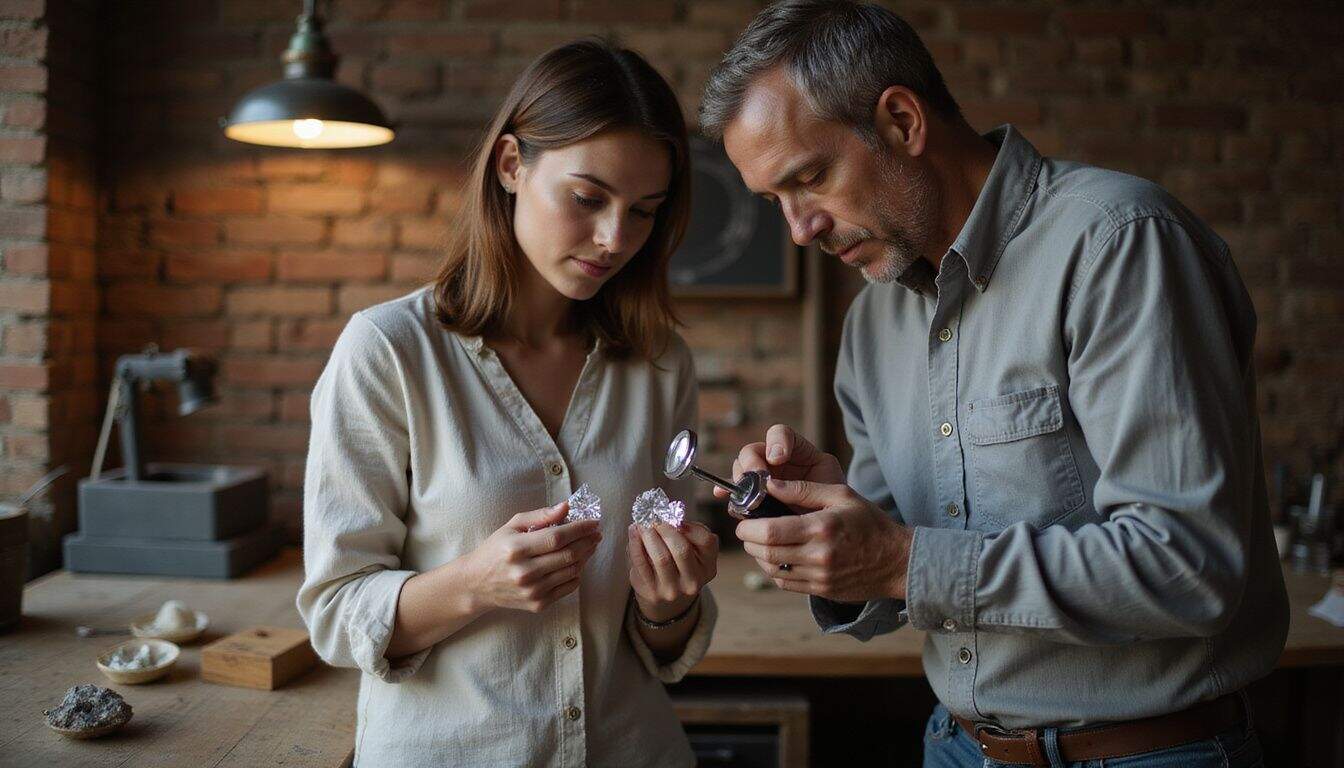
Lab-grown diamonds mainly come in two varieties: HPHT and CVD. HPHT stands for High Pressure High Temperature, and this diamond type grows in conditions similar to Earth’s mantle. Special machines apply intense heat and pressure to carbon, turning it into a diamond crystal.
I’ve looked closely at these gems—they show distinct growth patterns that trained gemologists easily identify.
CVD—or Chemical Vapor Deposition—diamonds grow a bit differently. These diamonds form inside special chambers filled with super-hot gas, starting from a tiny diamond “seed”. The gas breaks apart, and carbon atoms slowly attach to the seed, layer after layer, creating a full diamond.
Both HPHT and CVD methods create genuine diamonds, but each has unique characteristics. Taylor & Hart takes it one step further by treating their CVD diamonds with HPHT afterward, improving color and clarity.
This extra stage removes cloudy areas, enhancing the stone’s brilliance. Usually, experts at the Gemological Institute of America (GIA) grade lab-grown diamonds exactly like mined ones.
Each method leaves specific clues—tiny differences in crystal shapes and growth lines. With your eyes alone, though—you’d have a tough time spotting the difference between lab-created and natural diamonds.
Can You Tell the Difference Between Lab-Grown and Natural Diamonds?
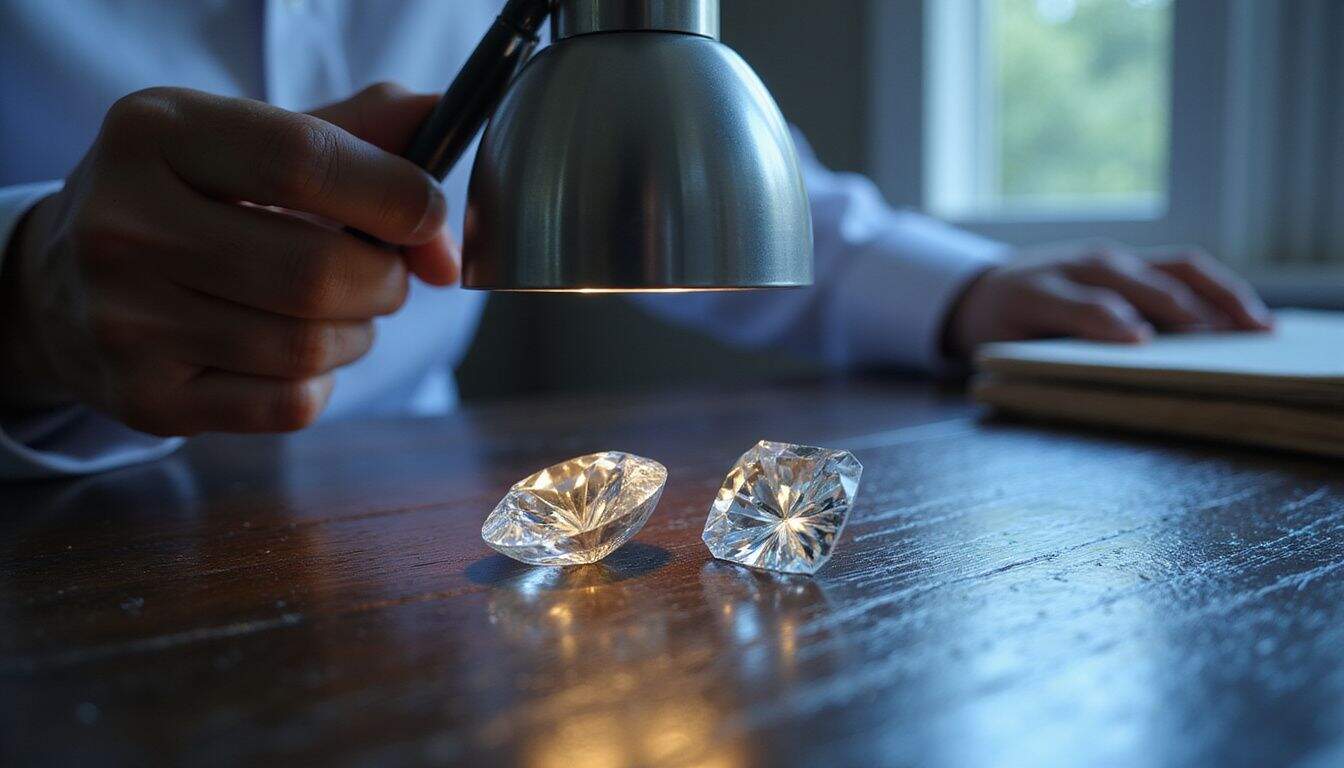
To the naked eye, lab-grown and natural diamonds look exactly the same. Expert gemologists need special tools like UV lamps and magnification equipment to spot tiny differences in these sparkly gems.
Visual Appearance
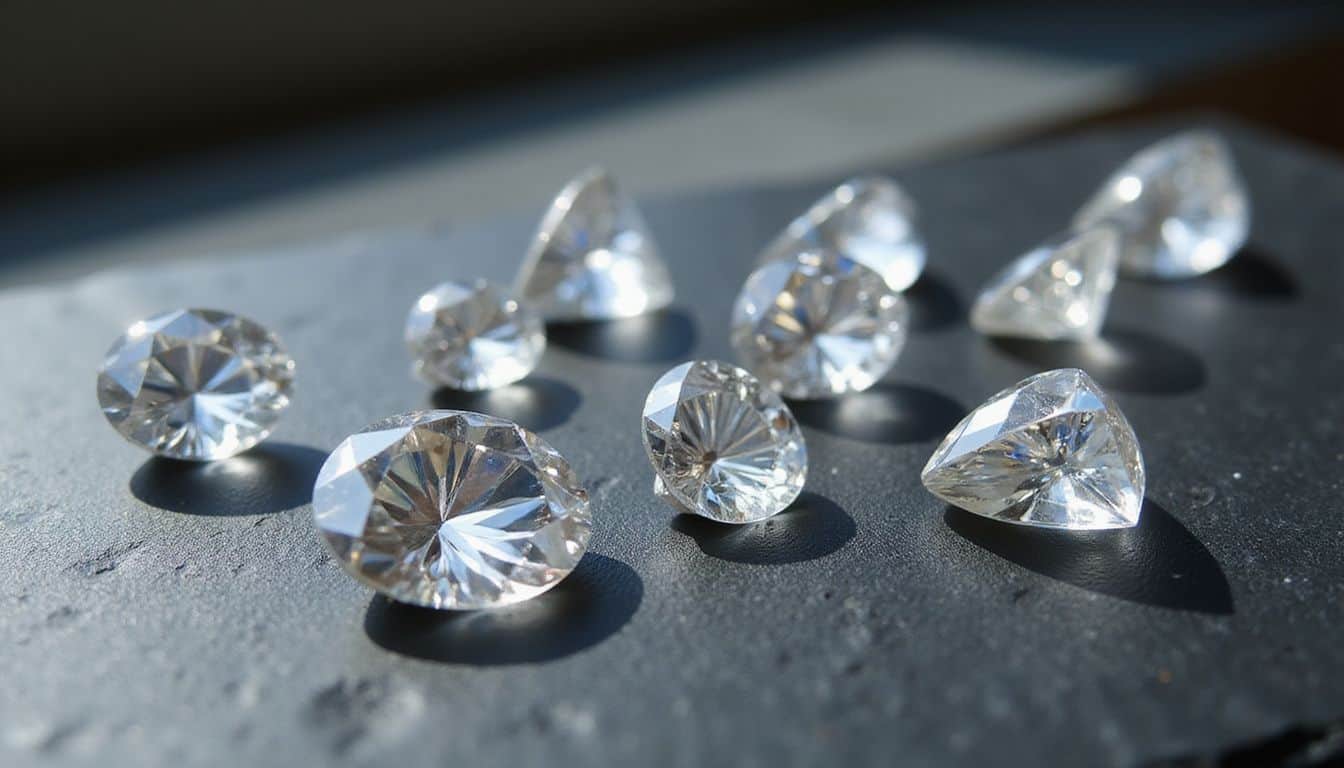
Lab-grown diamonds appear identical to natural diamonds at first glance. They have the same brilliance, fire, and sparkle that give diamonds their charm. Both kinds rank 10 on the Mohs hardness scale and share the same optical features.
In fact, even experienced jewelers struggle to distinguish lab-made diamonds from natural ones without specialized equipment. Lab-grown diamonds exist in many popular cuts too, like emerald, marquise, and asscher—just like mined diamonds.
The clarity grades also mirror natural diamonds, ranging from completely flawless to having tiny imperfections noticeable only under magnification.
Beauty lies in the brilliance, not in the origin.
The available colors in lab grown diamond rings perfectly match what’s seen naturally. Manufacturers can create these diamonds in fancy hues including pink, yellow, and even blue—often cheaper than natural-colored diamonds.
Under UV light, some lab diamonds glow blue, exactly like diamonds mined naturally. Experts rely on scientific tests and equipment to identify the true origin of these visually identical stones.
Chemical and Physical Properties
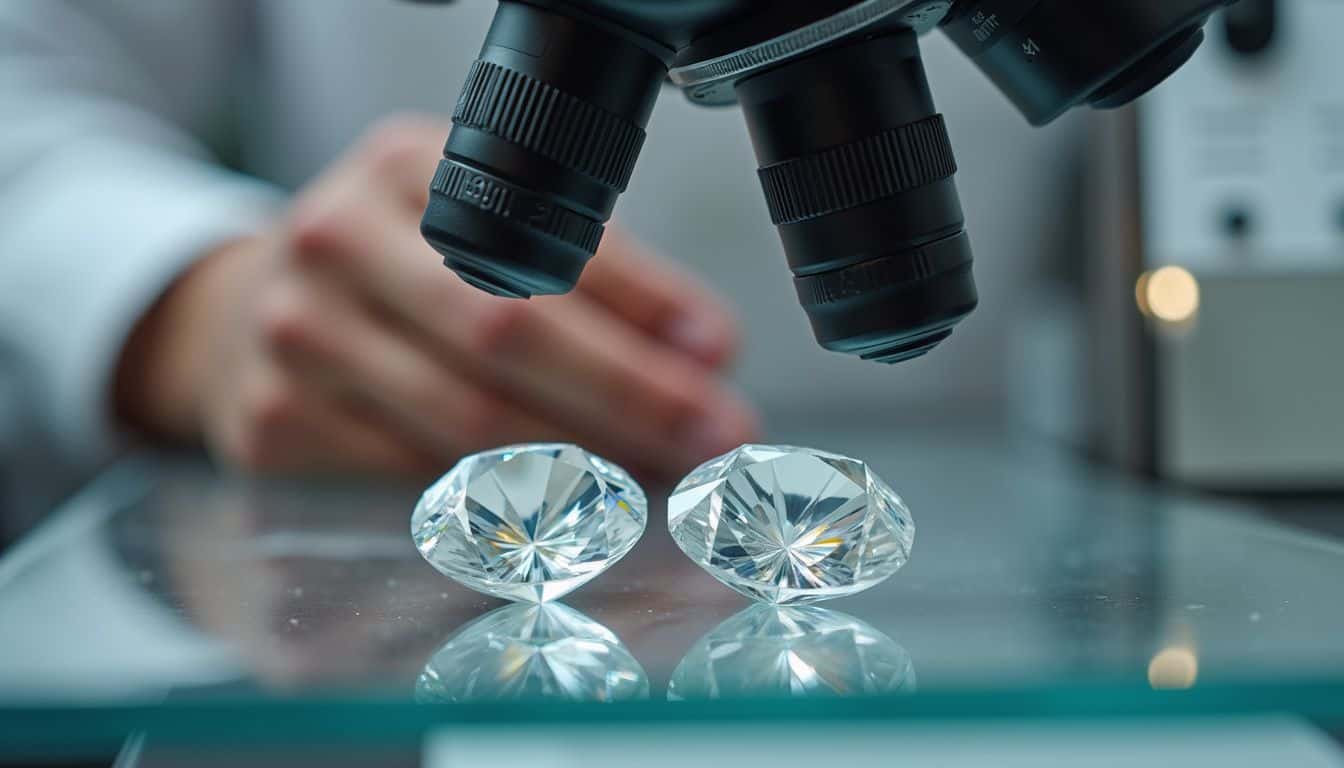
Diamonds created in labs have the exact same structure as natural diamonds. In both kinds, carbon atoms form tight, crystal bonds. These crystals rank a full 10 on the Mohs hardness scale, the highest possible grade for hardness.
Because of that, both kinds easily withstand scratches from nearly every material out there. I’ve personally studied both lab-created and natural diamonds under a microscope—and honestly—I couldn’t see any difference at all.
Chemically, they’re identical down to their internal structure, featuring matching sp3 carbon bonds that provide strength, brilliance, and shine.
You’d need specialized equipment to actually see the difference between lab-grown diamonds and natural ones. Both types register as genuine on standard diamond-testing devices. They have identical heat and electrical characteristics.
Even their glow under UV lights turns out pretty much the same. Major gem labs, like the GIA, use powerful instruments that pick up slight variations in crystal growth patterns. But these tiny patterns don’t change how your diamond will look—or hold up—in jewelry settings.
Methods to Identify Lab-Grown Diamonds
Telling lab-grown diamonds from natural ones takes skill and special tools. You can spot these gems through clear markings, expert testing, or official papers that reveal their true origin.
Check the Inscription on the Diamond Girdle
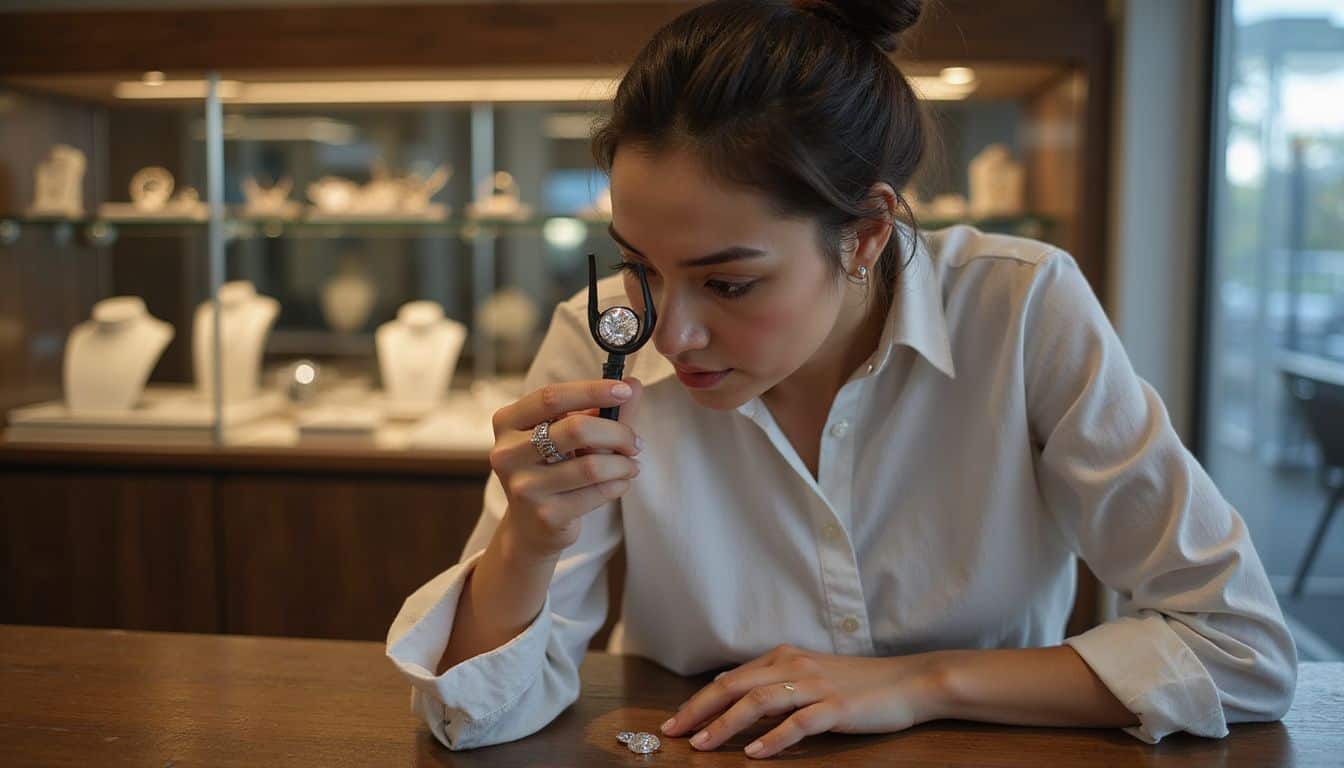
Checking the girdle of a diamond is a quick way to spot lab-created stones. Most laboratory-grown diamonds have tiny inscriptions etched carefully along their outside edge. Typical markings you might find include “lab-grown”, “laboratory-created”, or “CVD”, usually laser-engraved into the girdle.
Jewelers and gemologists add these labels as tiny identification tags on purpose, making them easier to recognize. The Gemological Institute of America (GIA) insists on these inscriptions for every synthetic diamond they certify, making them simple to spot.
So, grabbing a jeweler’s loupe or magnifying glass helps you quickly see if your sparkling gem formed naturally or in a lab.
Besides identifying the diamond as synthetic, these inscriptions provide useful details like a unique certification number or clarity grade. You can match these tiny engraved numbers directly to your certification documents—to double-check where your stone came from and validate its quality.
Natural diamonds can also have serial numbers etched on their girdle, but they won’t have the “lab-grown” or “laboratory-created” tag required specifically on synthetic gems.
Conduct Expert Tests
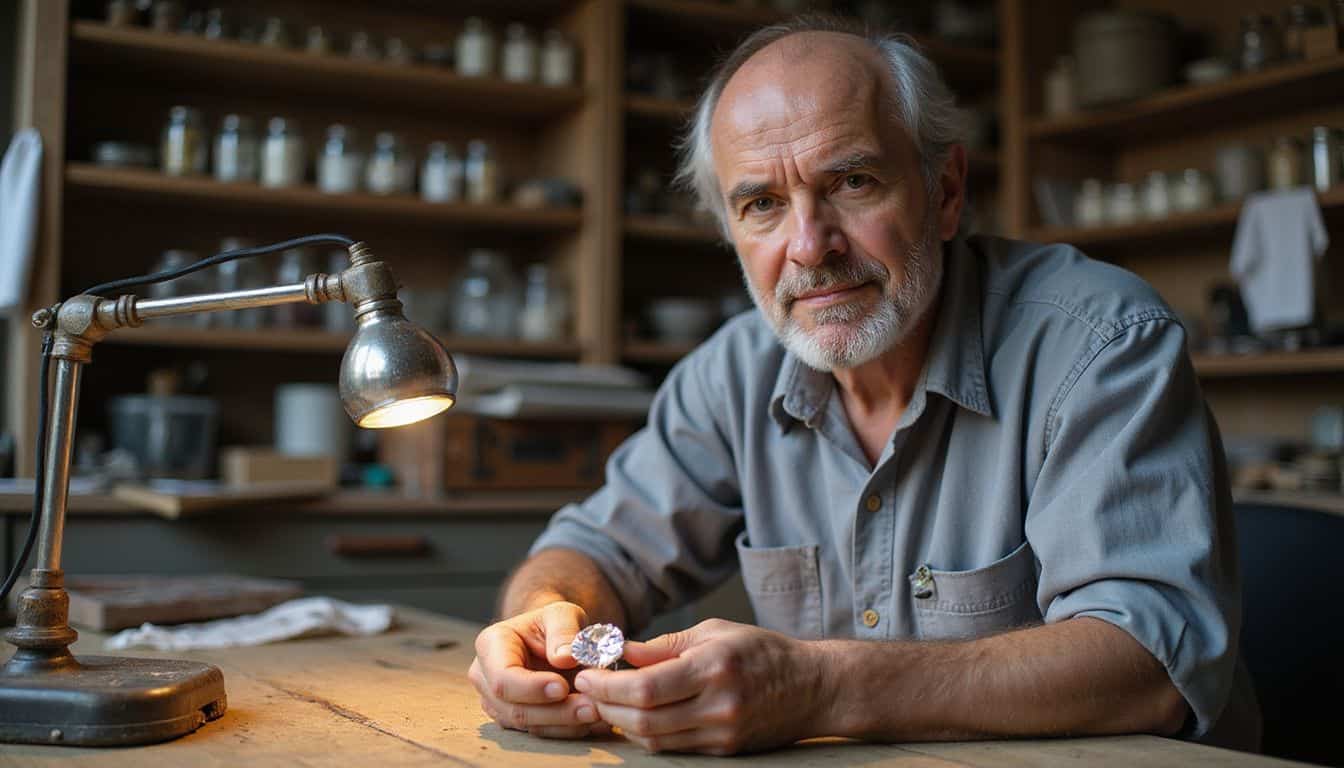
Expert testing methods are crucial to distinguish lab-grown diamonds from natural gems. Jewelers rely on advanced tools, like absorption spectroscopy and photoluminescence, to identify subtle differences.
These specialized tests measure how diamonds respond to heat and light—small clues pointing to their origin. Because lab-created and natural diamonds share identical chemical structures, simple tests alone won’t reveal the difference.
Even seasoned jewelry experts must use these high-tech methods to accurately identify the diamond type.
GIA certification typically lists detailed results from these specialized tests. Such testing can identify specific growth patterns or tiny chemical traces unique to lab-produced diamonds.
Advanced testing sometimes spots type IIa diamonds—uncommon in nature but frequently formed in labs. Jewelry for the flower girl could feature either diamond type, and only expert analysis can provide a definite answer.
Nowadays, most jewelers have access to portable testing equipment, offering reliable identification right on the spot.
Review the Diamond Grading Report

Diamond grading reports go beyond simple expert checks—they offer vital clues about your gem’s unique qualities. Think of these reports as your diamond’s own personal ID card, clearly listing major characteristics.
The Gemological Institute of America (GIA) provides separate grading scales for lab-created diamonds and natural gems. For laboratory-grown stones, GIA uses fewer categories to judge color and clarity.
A diamond grading report is your best friend when shopping for clarity and quality.
These reports also mention any special inscriptions placed on your diamond. For instance, GIA usually marks lab-made gems clearly, adding the label “LABORATORY-GROWN” along the diamond’s girdle—even if other inscriptions are already present.
Clear labeling like this helps you know exactly what you’re buying. Many women also carefully review reports to see if their diamond has blue fluorescence, since it can influence the stone’s appearance under various lighting conditions.
Key Differences Between Lab-Grown and Natural Diamonds
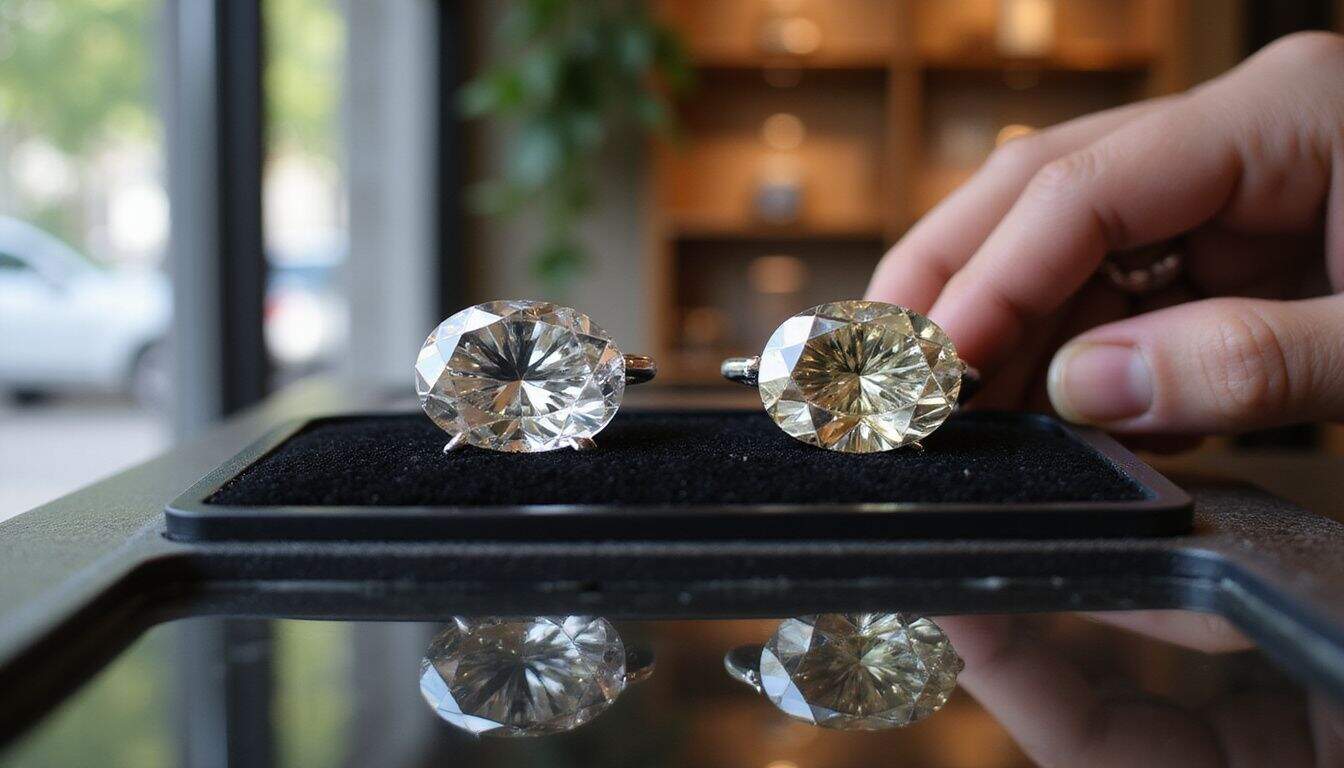
Lab-grown and natural diamonds differ in key ways that affect your buying choice. Natural diamonds form over billions of years deep in the earth, while lab diamonds grow in weeks through advanced technology.
Formation Process
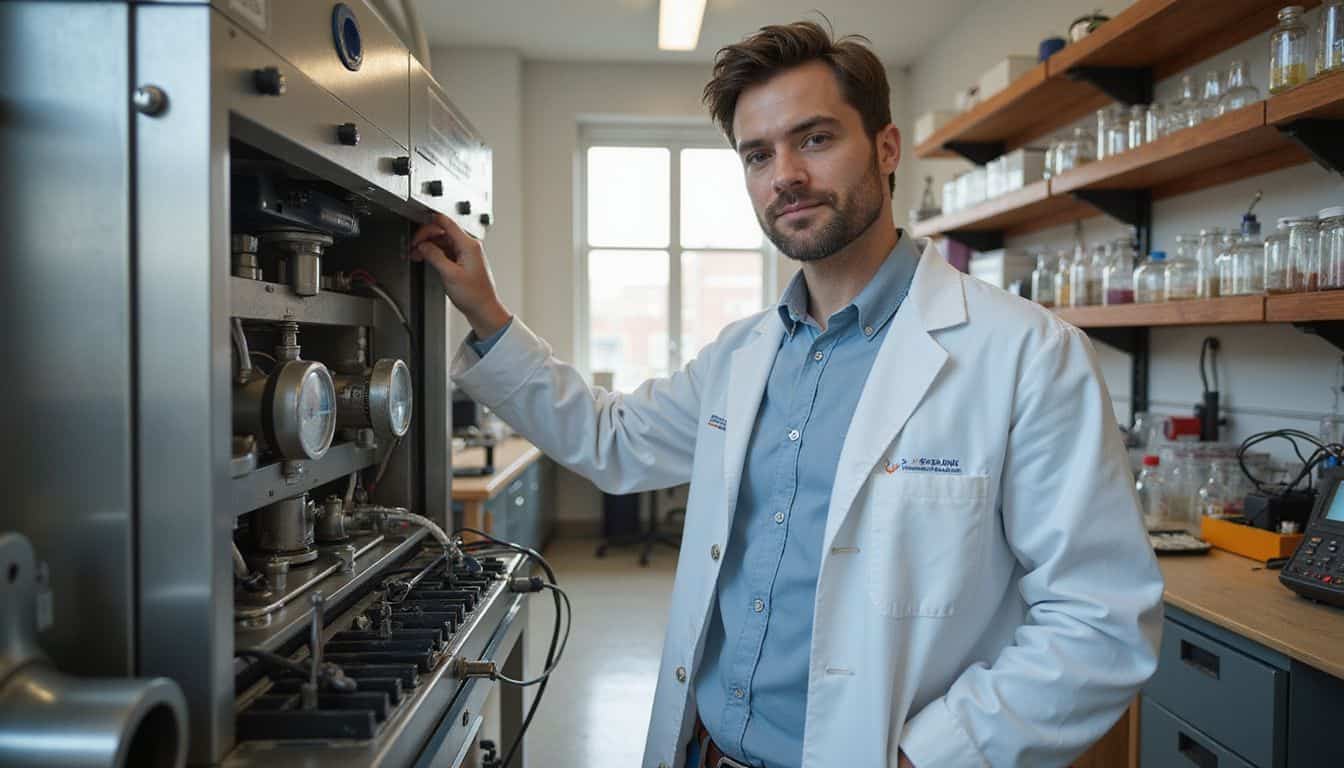
Natural diamonds form deep inside Earth, under intense heat and pressure. Billions of years pass as carbon atoms slowly bond, creating a unique crystal structure. Eventually, volcanic activity pushes these gems upward, delivering them near the surface inside volcanic pipes.
Miners then drill into kimberlite rock to dig them out.
Scientists grow diamonds differently, using controlled lab settings. Two main methods are common: High Pressure High Temperature (HPHT) and Chemical Vapor Deposition (CVD). These methods copy nature’s diamond-making process—but finish the job in weeks, not billions of years.
Both approaches deliver genuine diamonds with identical sp3 carbon bonds as natural stones.
The HPHT method involves giant presses, applying intense heat and pressure to carbon material. With the CVD technique, a thin slice of diamond—a seed—is placed inside a special chamber.
Carbon-filled gases then enter the chamber, where heat breaks them apart. As this happens, bits of carbon land on the seed, building the diamond slowly, layer after layer. Each lab process forms the same crystal structures as the Earth-created stones.
The true difference between lab-grown and mined diamonds is simply their origin and formation time—not their chemical properties or how they look and feel.
Environmental Impact
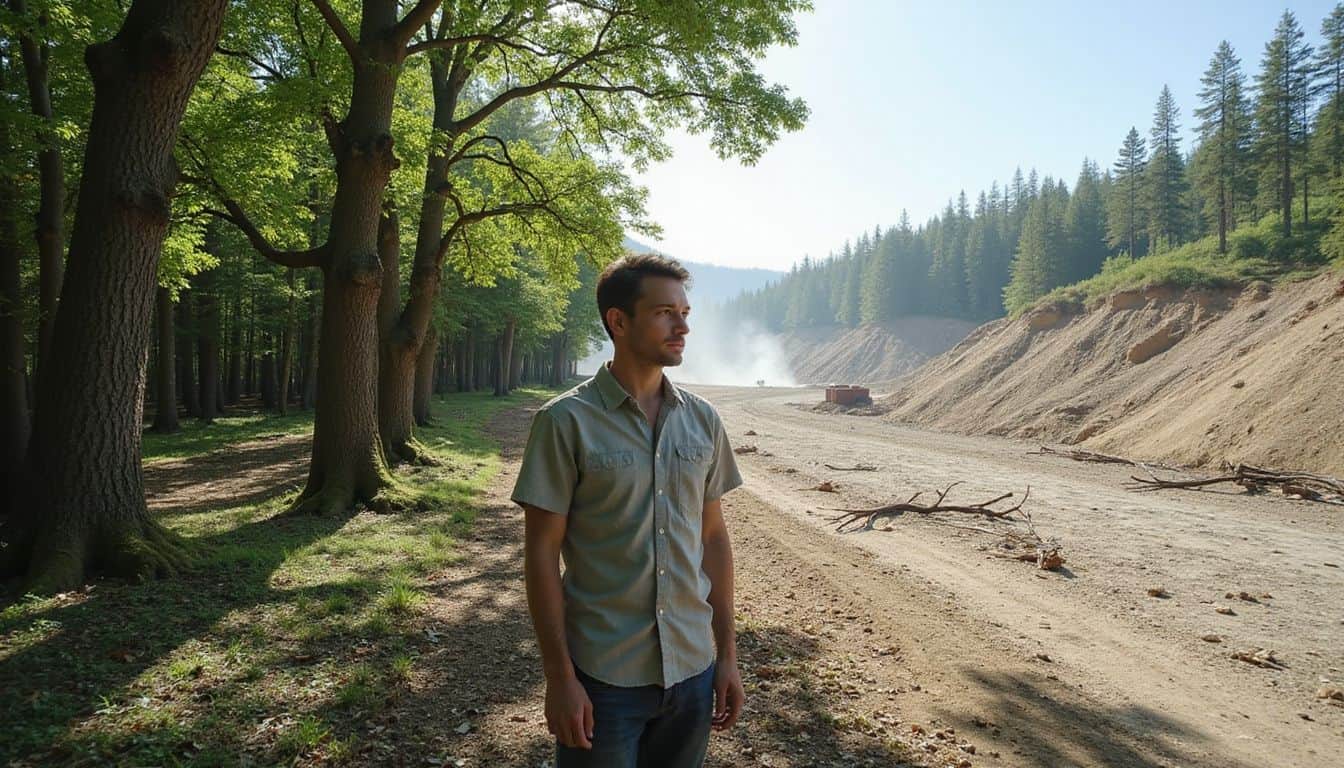
Lab-grown diamonds slash carbon emissions by up to 85% compared to traditional mined diamonds. They don’t require digging into the ground—meaning no ruined landscapes or polluted rivers.
Traditional mining often involves heavy machinery and chemicals, harming wildlife and poisoning water sources nearby. In contrast, lab diamonds are made safely indoors, protecting nature from this type of damage.
The choice between mined and lab-grown diamonds isn’t just about price – it’s about the world we leave behind.
Growing diamonds in labs uses much less water and produces far fewer waste materials. Women especially value jewelry that doesn’t compromise on beauty or the planet’s well-being. Each year, interest in environmentally responsible jewelry expands, as more consumers become aware of these advantages.
To attract buyers, companies now proudly display their eco-friendly methods clearly on diamond certificates.
Price Differences

Diamonds created in a lab usually cost about 20% to 40% less than those found naturally. The price difference happens because lab diamonds don’t involve mining and can grow within a few weeks—whereas natural ones take billions of years to form underground.
Interestingly, the market shows that prices for lab diamonds keep falling as time goes on. Natural diamonds generally hold their value better, but neither type truly makes sense as an investment compared with other assets.
Many women prefer lab-grown stones since they can buy a larger diamond without breaking their budget. For example, you could pick up a one-carat lab-created diamond for roughly the same price as a 0.7-carat natural stone with the same clarity.
Such savings make lab-created diamonds ideal for engagement rings—especially if you want to impress while staying cost-conscious.
Common Myths About Lab-Grown Diamonds
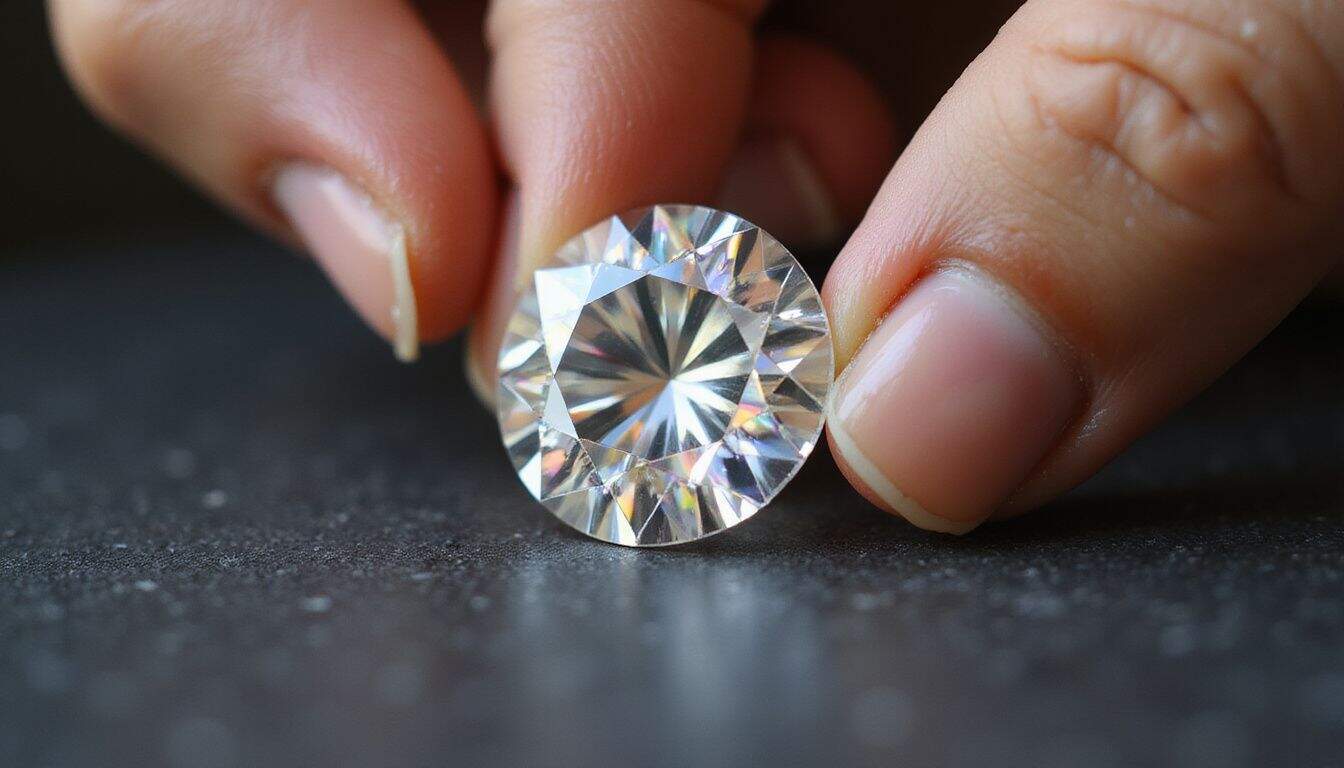
Let’s bust some myths about lab-grown diamonds that confuse many shoppers – from false claims about their authenticity to misconceptions about how they test under expert examination – read on to discover what’s fact and what’s fiction in the world of synthetic diamonds.
Are Lab-Grown Diamonds Real?
Yes, lab-created diamonds are absolutely real. They match mined diamonds exactly, sharing the same chemical makeup, physical structure, and visual properties. Both are composed entirely of carbon atoms bonded in a crystalline shape through sp3 bonds.
Trusted organizations, such as the Gemological Institute of America (GIA), officially recognize lab diamonds as authentic gemstones—not fakes like cubic zirconia or moissanite.
The only real difference is where they come from. Natural diamonds form slowly inside the Earth’s crust, taking millions of years. Lab diamonds develop under controlled conditions in just a few weeks.
Many people actually prefer lab diamonds. They typically come with fewer imperfections, since the lab setting carefully controls growth conditions. That means higher clarity grades are common, including the highly-desired “internally flawless” rating—something extremely rare in naturally mined gems.
Often, diamond buyers worry about proving authenticity. Good news—lab-grown diamonds easily pass standard diamond-testing tools. Jewelers and expert gemologists use these tests regularly, and lab diamonds check out every time.
Do Lab-Grown Diamonds Test as Real Diamonds?
Lab-grown diamonds easily pass all standard diamond tests. They possess the exact chemistry and physical traits of natural diamonds—pure carbon arranged in a crystal structure. Even cutting-edge diamond testers can’t spot differences between a mined gem and a lab-created one.
Professional gem labs like the Gemological Institute of America (GIA) must use specialized instruments to detect subtle distinctions.
Diamond testing devices measure characteristics like heat conductivity, which both lab-grown and natural diamonds share perfectly. Scientifically speaking, lab-created diamonds match mined diamonds in every important way.
The only reliable sign showing a diamond came from a lab is a tiny laser inscription placed on the girdle; this mark is openly provided by trustworthy diamond sellers for full transparency.
Now, let’s check out why lab-grown diamonds have become such a popular choice among jewelry shoppers today.
Benefits of Lab-Grown Diamonds

Lab-grown diamonds offer amazing perks like ethical sourcing, lower prices, and custom options that might make you rethink your next jewelry purchase – read on to discover how these gems are changing the market!
Ethical and Sustainable Practices
Diamonds grown in labs offer ethical clarity that mined gems often can’t match. They sidestep troubling human rights issues common in traditional diamond mining—like child labor, unsafe working conditions, and conflict zone funding.
Their creation process leaves a much lighter environmental footprint, too. Growing diamonds in a lab requires far less energy than operating giant mines that damage the planet. Concrete numbers tell the story best: lab-created diamonds generate roughly 85% fewer carbon emissions than mined stones do.
For women who care about beauty and social responsibility alike, these sparkling stones guarantee peace of mind. You can proudly wear stunning diamonds, confident your choice hasn’t harmed communities or ruined natural habitats.
This ethical advantage makes lab-created diamonds ideal if you want jewelry that aligns perfectly with your personal values, without giving up quality or charm.
Affordability
Lab-grown diamonds typically cost around 20-40% less than natural ones. This price difference means your budget goes further, giving you more choices. You can opt for a bigger stone, improved clarity, or a nicer cut, all without spending extra.
Many women prefer lab-created diamonds since they sparkle beautifully and don’t empty your wallet. Lower prices don’t equal lower quality—lab-grown diamonds have the exact chemical structure as mined stones.
Because lab-created gems offer such strong value, their market continues to grow steadily. You can use your savings for special things like a dream honeymoon or a down payment on a home.
With lab-grown stones, you get the financial freedom of spending less, along with a genuine, certified diamond built to last forever. Clarity-graded lab diamonds provide the same beauty, strength, and sparkle of natural diamonds—for just a portion of the price.
Availability in Custom Shapes and Sizes
You can find lab-created diamonds in all sorts of beautiful shapes and sizes, many of which are rare in natural stones. Whether you’re into delicate heart shapes or elegant ovals, pear cuts or something uniquely created for your style—the choices seem endless.
Jewelers can grow diamonds in various sizes, easily matching your personal taste and budget. Plenty of women appreciate the freedom to choose exactly what they love, rather than settling for ordinary shapes.
Even better, the lower cost makes these unique designs much easier on your wallet. A fancy marquise shape, or other rare cuts that normally cost a lot for natural gems, become affordable as lab-created stones.
Plus, certification from GIA assures that these diamonds meet identical quality standards as mined diamonds. Next, we’ll check out how certification works for lab-created diamonds—and why that’s a big deal in your shopping journey.
Lab-Grown Diamond Certification

Lab-grown diamond certification gives you proof of your gem’s quality and origin. A proper certificate from GIA or other trusted labs shows that your diamond meets strict standards for cut, clarity, and authenticity.
Importance of Certification
Diamond certification is your ticket to quality—and peace of mind. An accurate certificate clearly lists details about your diamond’s cut, clarity, color, and carat weight. This document is especially important for lab-grown diamonds, since it verifies exactly where and how the stone was made.
Major gem labs, such as GIA, now provide specialized reports for lab-created stones, distinct from certificates given to natural diamonds. These reports offer valuable insights to help you choose wisely and safeguard your investment.
Plus, you’ll find specific information on unique characteristics and any treatments the diamond received.
With a certified lab diamond, there won’t be surprises down the road. Clarity grading standards match the strict levels set for natural diamonds, giving you reliable information to compare stones effectively.
For many women, official certification matters greatly—particularly if they’re buying diamonds for special milestones or long-term investments. The certificate tells the diamond’s unique story, proving its worth in case you decide to sell or trade it later.
Trusted Certification Authorities
The International Gemological Institute (IGI) is a popular, reliable option for lab-grown diamond certification. IGI provides clear, detailed reports proving a diamond’s authenticity, along with its quality rating based on the 4 Cs—cut, clarity, carat weight, and color.
The experts at IGI examine diamonds closely, using advanced lab equipment, checking chemical makeup and crystal structure to guarantee precise results. This gives you accurate details about your gem and confidence in your purchase.
Other trusted certification groups include the Gemological Institute of America (GIA) and GCAL (Gem Certification & Assurance Lab). These organizations carefully analyze elements like hydrogen and carbon to determine whether the diamond is natural or created in a lab.
Their certificates also indicate whether heat treatments were part of the diamond’s formation. Savvy buyers always request official certification before purchasing—it’s proof you’re buying an authentic diamond with the exact features you’re promised.
Can Jewelers Tell the Difference?
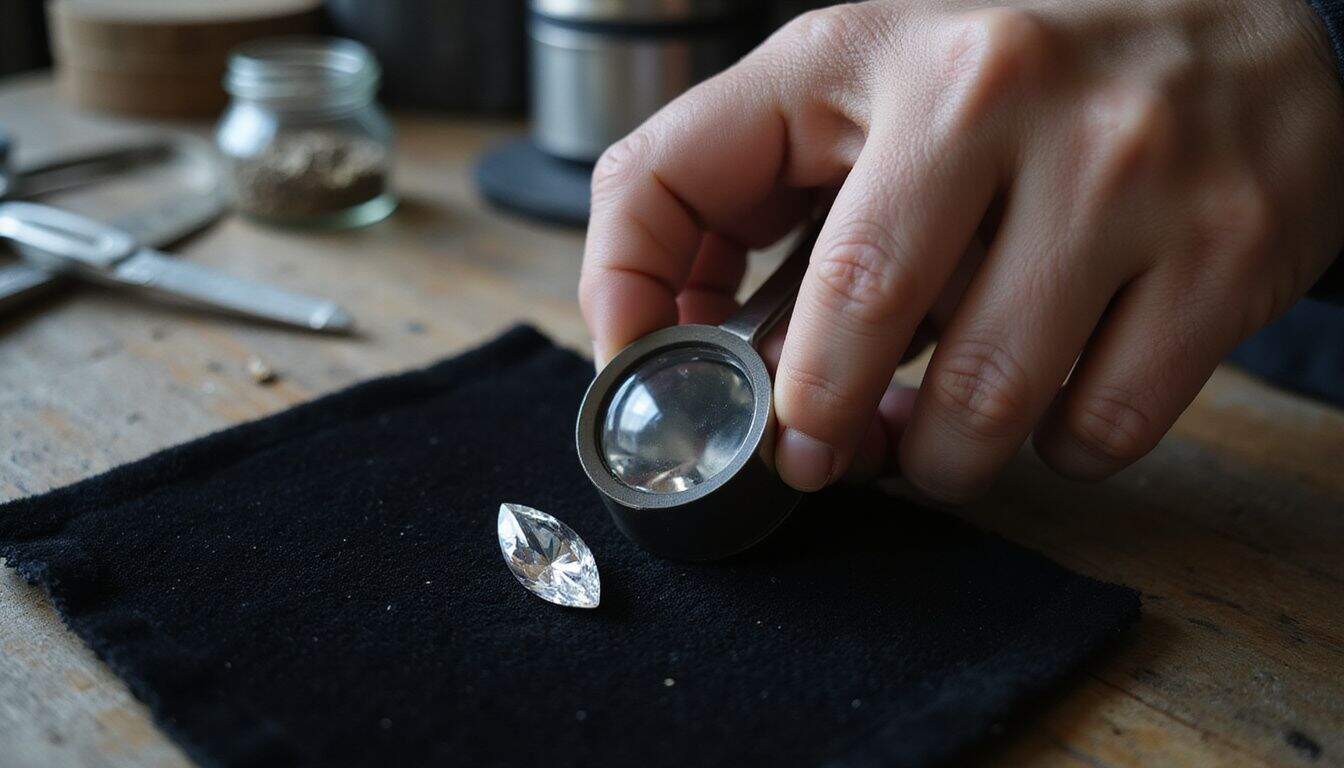
Most jewelers can’t tell lab-grown diamonds from natural ones just by looking. They need specialized equipment to spot the difference clearly. That’s because lab-grown and natural diamonds have identical optical, chemical, and physical properties—making visual identification nearly impossible.
Even seasoned diamond experts find it tricky to distinguish them without advanced tools.
Organizations like the Gemological Institute of America (GIA) rely on specialized instruments to pinpoint lab-grown diamonds accurately. These testing devices detect subtle signs left behind during the diamond’s formation process—whether by High Pressure High Temperature (HPHT) or Chemical Vapor Deposition (CVD).
The equipment identifies unique growth patterns, marking tiny differences in how carbon atoms came together to form the stone.
If you’re curious about your own diamond, just request a detailed gem certification. A reliable grading report can verify exactly how your gem came into existence—whether your marquise-shaped diamond formed naturally in the earth or grew inside a lab.
How Will Lab-Grown Diamonds Evolve in 2025?

Lab-grown diamonds will cost much less by 2025, thanks to improved production methods. Companies are refining their processes—specifically High Pressure High Temperature (HPHT) and Chemical Vapor Deposition (CVD)—to make these gems more affordable.
With better pricing, lab-created diamonds will increasingly compete with natural stones, giving shoppers plenty of options. Advanced technology will also help jewelers easily identify the difference between lab-made and natural diamonds—similar to how professionals can spot quality differences in decor at a wedding.
Lab diamonds can also offer unique color choices at prices lower than natural diamonds. Certification groups like the Gemological Institute of America (GIA) will grade lab-grown gems by the same strict standards used for mined diamonds.
Many shoppers—especially women—will favor lab diamonds, since they avoid the ethical issues associated with mining.
The structure of lab-made diamonds matches that of natural diamonds—both share the same sturdy sp2 bonded arrangement. While natural gems form over billions of years, lab-grown stones can be created within just a few weeks.
Plus, jewelers grade their clarity using the exact same criteria—making lab-created diamonds identical to mined diamonds in every aspect that counts.
People Also Ask
Can lab-created diamonds be distinguished from natural diamonds?
Most people can’t spot the difference between lab-grown diamonds and natural stones with their eyes alone—it’s nearly impossible. Organizations like the Gemological Institute of America (GIA) rely instead on specialized equipment to analyze diamond growth patterns, revealing precisely how they formed.
Do lab-grown diamonds contain inclusions similar to natural ones?
Lab-grown diamonds can definitely have inclusions. During the growth process, tiny particles and substances sometimes become trapped inside—just as they do in diamonds from nature. Still, lab-made diamonds often come out clearer than natural gems and usually earn higher clarity ratings.
Are HPHT lab-grown diamonds worth less than natural diamonds?
HPHT lab diamonds typically cost less but aren’t lower-quality gemstones. The cheaper price has more to do with how efficiently labs produce these diamonds compared to waiting millions of years for nature’s slow formation process. Market preference, more than gemstone quality, explains the price gap.
Can lab-grown diamonds be shaped into cuts like marquise?
Lab diamonds can be shaped into any cut—including marquise—just as easily as mined diamonds. The crystal structure is identical to a natural stone, making it responsive to any cutting style preferred.
Will lab diamonds glow under UV lighting?
Lab-created diamonds can glow under UV lights, similar to natural diamonds—though they won’t all show this reaction. Certain minute elements within the diamond structure cause fluorescence under UV radiation—exactly how it works in natural stones, too.
References
https://phys.org/news/2023-09-experts-diamonds-grown-lab.html
https://taylorandhart.com/us/blog/lab-grown-diamonds-hpht-vs-cvd-explained
https://www.brilliantearth.com/lab-diamond/buying-guide/
https://www.gia.edu/gia-faq-analysis-grading-identify-laboratory-grown-diamonds
https://www.americangemsociety.org/natural-vs-laboratory-grown-diamonds/
https://www.diamondmansion.com/blog/lab-grown-diamonds-vs-natural/ (2025-01-20)
https://luminescediamonds.com.au/pages/lab-grown-diamonds-testing
https://www.growndiamondcorp.com/blog/7-lies-and-myths-about-lab-grown-diamonds-you-must-know/
https://www.queensmith.co.uk/journal/are-lab-grown-diamonds-more-ethical (2025-02-19)
https://www.diamonds.pro/education/lab-created-diamond-certification-igi/
